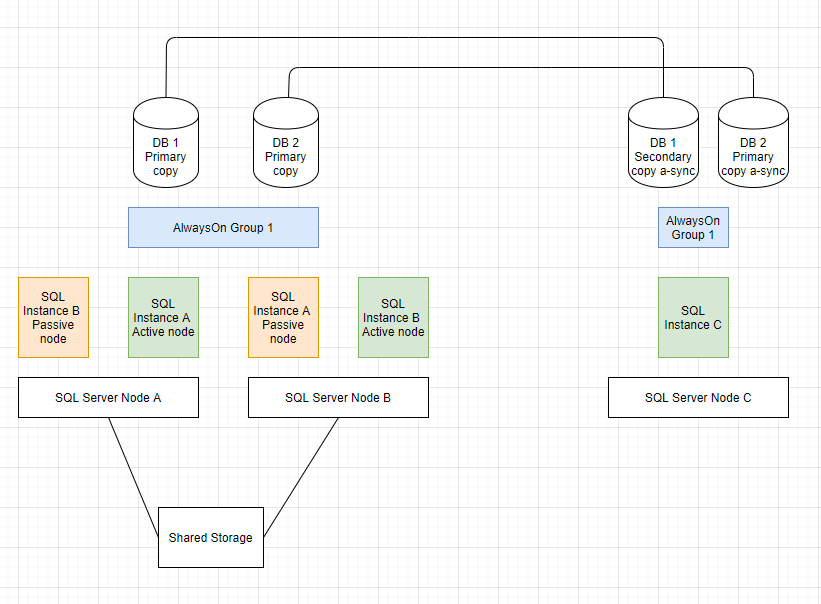Yes and no. You cannot configure it in such a way that each server hosts a copy of the database. They both share the same storage, so that is logical. You have a SQL Server cluster OR you configure AlwaysOn between the 2. However, you can host an AlwaysOn copy on a SQL Server failover cluster instance (FCI). In that case, you need one or more other SQL Servers to host the synchronous or a-synchronous copies. The picture below might illustrate this a bit (no sure where I got it from, it is from my own library):
Mind the difference between the two: a SQL Server failover cluster hosts an instance of SQL Server using 2 servers in an active/passive configuration. An AlwaysOn node hosts a database or group of databases on a single instance.
Here are some possible usefull links:
https://blog.papercut.com/the-ultimate-guide-to-high-availability-methods-for-microsoft-sql-server/
https://www.brentozar.com/archive/2012/02/introduction-sql-server-clusters/
https://techcommunity.microsoft.com/t5/Premier-Field-Engineering/An-overview-of-High-Availability-and-Disaster-Recovery-solutions/ba-p/370479
Is this the configuration you currently have?

If so, then you can create a setup like the one below. You can see that there is an extra SQL Server node with 1 instance that hosts an a-synchronous copy for each database of the availability group (where a-synchronous would be common for a DR setup). You can use synchronous copies technically, but you would not use that for a DR scenario. Synchronous copies rely heavily on latency and is therefore suitable for an High Availability scenario. For your understanding; look at the AlwaysOn layer as a seperate thing. There is no difference in configuring the AlwaysOn group on single server instances or a Failover Cluster Instance. AlwaysOn is configured at the database level.

Be aware that you need to buy an extra license in this configuration. However, recently there was a change in licensing for SA customers, which would make it free:
https://cloudblogs.microsoft.com/sqlserver/2019/10/30/new-high-availability-and-disaster-recovery-benefits-for-sql-server/
Also; don't forget to look how you would setup your maintenance scripts and that instance level configuration is not copied to the other server. If you require things to be in sync, then you need to script that or update it manually every time you change something.
I found this easy setup guide for you to configure the AlwaysOn group:
https://www.sqlservercentral.com/blogs/alwayson-availability-groups-step-by-step-setup
Also be aware that mixing 2 seperate technologies (Failover Cluster Instances and AlwaysOn) make things more complex. It is more complex to troubleshoot then when you have only 1 technology. You could setup a similar HA/ DR setup with AlwaysOn only like below. Just be aware that you need double the storage space (which you don't need for a cluster setup) and you would have some more latency (because you need to wait for the commit of the synchronous copy):

There are a lot of things you need to make decisions on, because all the technologies have their strong and weak points. The only option to learn them all is to read about it, but I think you get a fairly good jumpstart with all this information.
Oh and you might want to delete your Answer earlier. I saw you also set it in the comments, so it is double.



